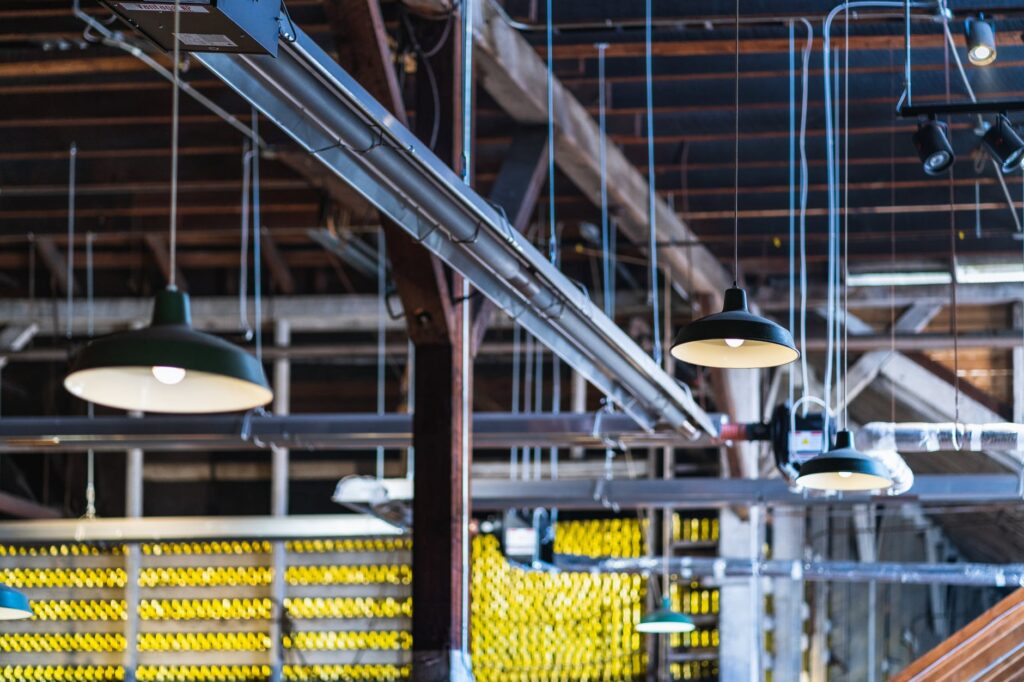In today’s competitive business world, maintaining a comfortable, energy-efficient, and reliable indoor environment is vital for productivity and customer satisfaction. Whether you run a small office, retail store, restaurant, or healthcare facility, your HVAC system plays a key role in keeping your space functional and comfortable year-round. This is where Light Commercial Systems come in — providing the perfect balance of performance, efficiency, and flexibility for small to medium-sized commercial spaces.
In this guide, we’ll explore what light commercial systems are, how they work, their benefits, and why choosing the right HVAC partner is essential for smooth business operations.
What Are Light Commercial Systems?
Light Commercial Systems are HVAC (Heating, Ventilation, and Air Conditioning) units specifically designed for small to mid-sized commercial properties. They offer powerful temperature control while maintaining energy efficiency, making them ideal for:
- Small offices and business complexes
- Retail stores and boutiques
- Restaurants and cafés
- Medical offices and clinics
- Schools, churches, and community centers
- Warehouses or small industrial buildings
These systems are built to deliver consistent heating and cooling for areas larger than residential homes but smaller than large-scale industrial or high-rise commercial buildings.
How Light Commercial Systems Work
A light commercial HVAC system operates similarly to residential systems but with higher capacity and enhanced control features. Here’s a simplified breakdown of how it functions:
- Heating and Cooling:
The system uses heat pumps or rooftop units (RTUs) to provide both heating and cooling, depending on your indoor temperature needs. - Ventilation:
Proper ventilation ensures fresh air circulates throughout the building, preventing stuffiness and improving air quality. - Zoning and Controls:
Advanced light commercial systems often include zoning capabilities, allowing different temperature settings in separate areas of the building — perfect for multi-room facilities. - Air Filtration:
Built-in filtration systems remove dust, allergens, and airborne contaminants, ensuring a healthier environment for employees and customers. - Smart Controls:
Many modern systems come with programmable thermostats or smart building management features that let you monitor and adjust settings remotely for better efficiency.
Types of Light Commercial HVAC Systems
Depending on your building’s layout and business needs, different HVAC configurations may suit your space. Here are the most common types:
1. Rooftop Units (RTUs)
These are self-contained systems installed on the roof, combining heating, cooling, and ventilation in one compact unit. They are ideal for businesses looking to save interior space and simplify maintenance access.
2. Split Systems
A split system separates the condenser (outdoor unit) and air handler (indoor unit), allowing flexibility in installation. They are efficient, cost-effective, and easy to maintain.
3. Ductless Mini-Split Systems
For spaces without ductwork, ductless mini-split systems are a great option. They provide targeted heating and cooling with individual air handlers for each zone or room.
4. Packaged Units
These systems combine all components into one outdoor unit, simplifying installation and reducing space requirements — commonly used in small offices or retail stores.
5. Heat Pump Systems
Heat pumps provide both heating and cooling using a single system. They are energy-efficient and ideal for moderate climates.
Benefits of Light Commercial Systems
Installing or upgrading to a light commercial HVAC system offers numerous advantages for business owners.
1. Energy Efficiency
Modern systems use advanced technologies like variable-speed compressors and energy recovery ventilation to minimize energy consumption while maximizing comfort.
2. Cost Savings
Lower energy use directly translates to reduced utility bills. Additionally, efficient systems require fewer repairs and have longer lifespans, saving money in the long term.
3. Enhanced Comfort
Consistent temperature control and proper humidity management ensure a comfortable atmosphere for employees and customers — boosting morale and productivity.
4. Improved Indoor Air Quality
Integrated air filtration and ventilation systems reduce airborne pollutants, allergens, and odors, creating a healthier indoor environment.
5. Smart System Control
With digital thermostats and remote management options, business owners can easily monitor and adjust HVAC performance, even when off-site.
6. Quiet Operation
Newer systems are designed to operate quietly, minimizing noise disruptions in workplaces or customer areas.
7. Compact and Space-Saving Design
Rooftop and packaged units free up valuable indoor space, ideal for small commercial buildings or retail environments.
Common Issues in Light Commercial Systems
Even the most advanced HVAC systems can experience problems without regular maintenance. Here are some common issues business owners might face:
- Uneven heating or cooling due to airflow imbalances.
- Refrigerant leaks that reduce system efficiency.
- Thermostat malfunctions leading to inconsistent temperature control.
- Dirty filters or coils causing poor air quality and energy waste.
- Electrical issues that may cause the system to short-cycle or stop working.
Timely repairs and routine maintenance can prevent these problems and extend the life of your HVAC system.
The Importance of Professional Installation and Maintenance
Choosing the right professional for installation and maintenance makes all the difference in performance and reliability.
Here’s why professional service is essential:
- Proper Sizing: Experts calculate your building’s load requirements to ensure the system matches your space’s size and needs.
- Correct Installation: Proper ductwork, wiring, and insulation ensure peak performance.
- Preventive Maintenance: Regular tune-ups reduce breakdowns, improve efficiency, and maintain warranty coverage.
- Energy Audits: Professionals can evaluate your system’s efficiency and suggest improvements for cost savings.
A well-installed and maintained light commercial HVAC system can serve your business efficiently for 10–20 years.
When to Replace or Upgrade Your Light Commercial System
If your current HVAC system is more than 10–15 years old, struggles to maintain temperature, or frequently needs repairs, it might be time to upgrade. Modern systems are more energy-efficient and environmentally friendly, reducing operating costs and carbon footprint.
Signs you may need a replacement include:
- Rising energy bills
- Inconsistent airflow
- Frequent breakdowns
- Outdated technology
- Poor humidity control
Investing in a new light commercial system ensures long-term savings and reliability.
Why Choose a Professional HVAC Partner
When it comes to light commercial HVAC systems, expertise matters. Partnering with a trusted contractor ensures that your system is designed, installed, and maintained to the highest standards. Look for professionals who offer:
- Certified and licensed technicians
- Comprehensive repair and maintenance plans
- Energy-efficient system recommendations
- Prompt emergency service
- Transparent pricing and warranties
A dependable HVAC partner will not only help you choose the right system but also ensure continuous comfort for your employees and customers.
Conclusion
A reliable Light Commercial System is more than just an HVAC unit — it’s the backbone of your business’s indoor environment. It ensures year-round comfort, energy efficiency, and optimal air quality, all while keeping operational costs in check.
Whether you’re setting up a new facility or upgrading your current system, choosing professional installation and maintenance services is the key to maximizing performance and longevity. With a properly designed and maintained HVAC system, your business can enjoy consistent comfort, lower energy costs, and a healthier atmosphere for everyone who walks through your doors.




